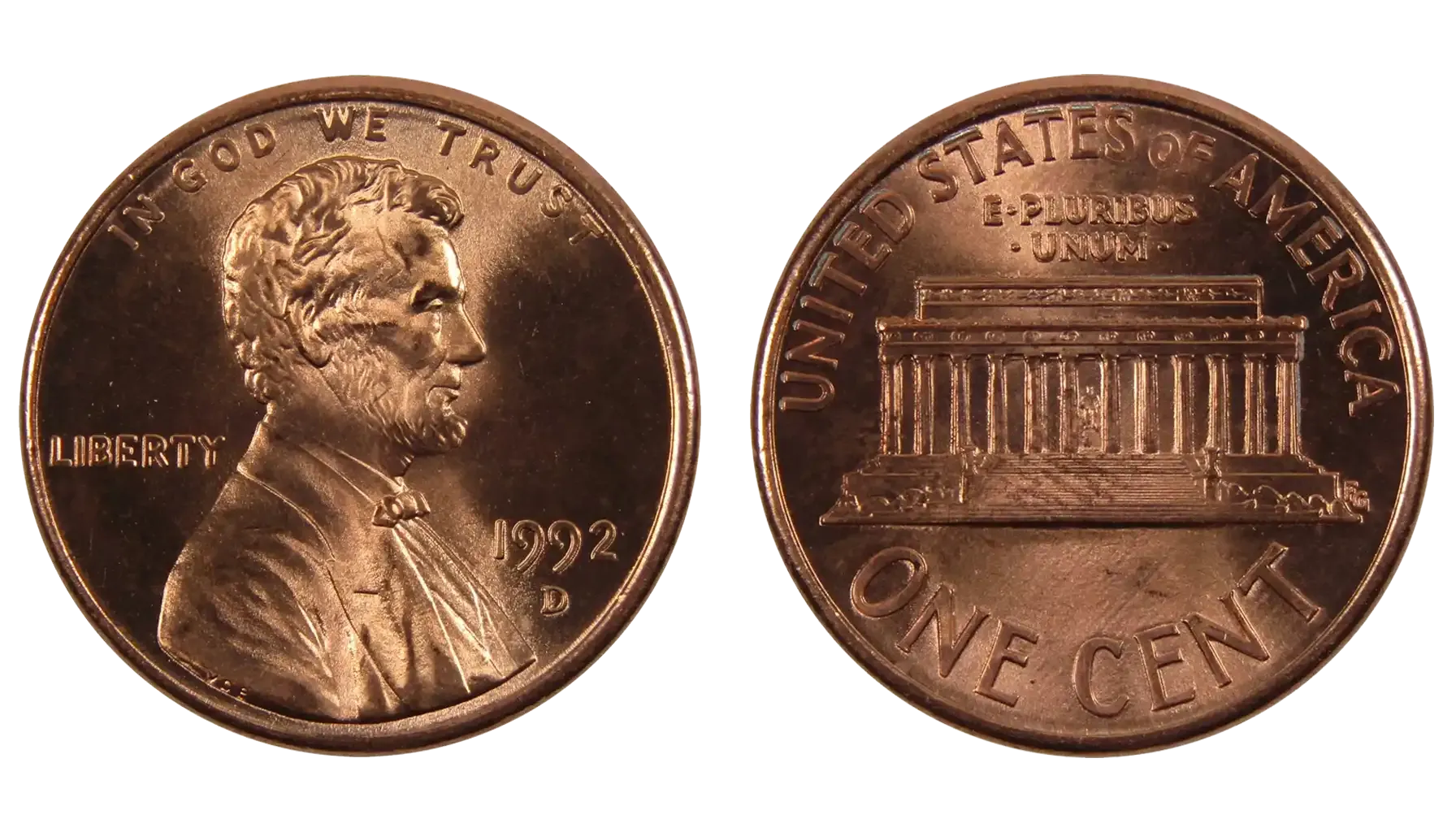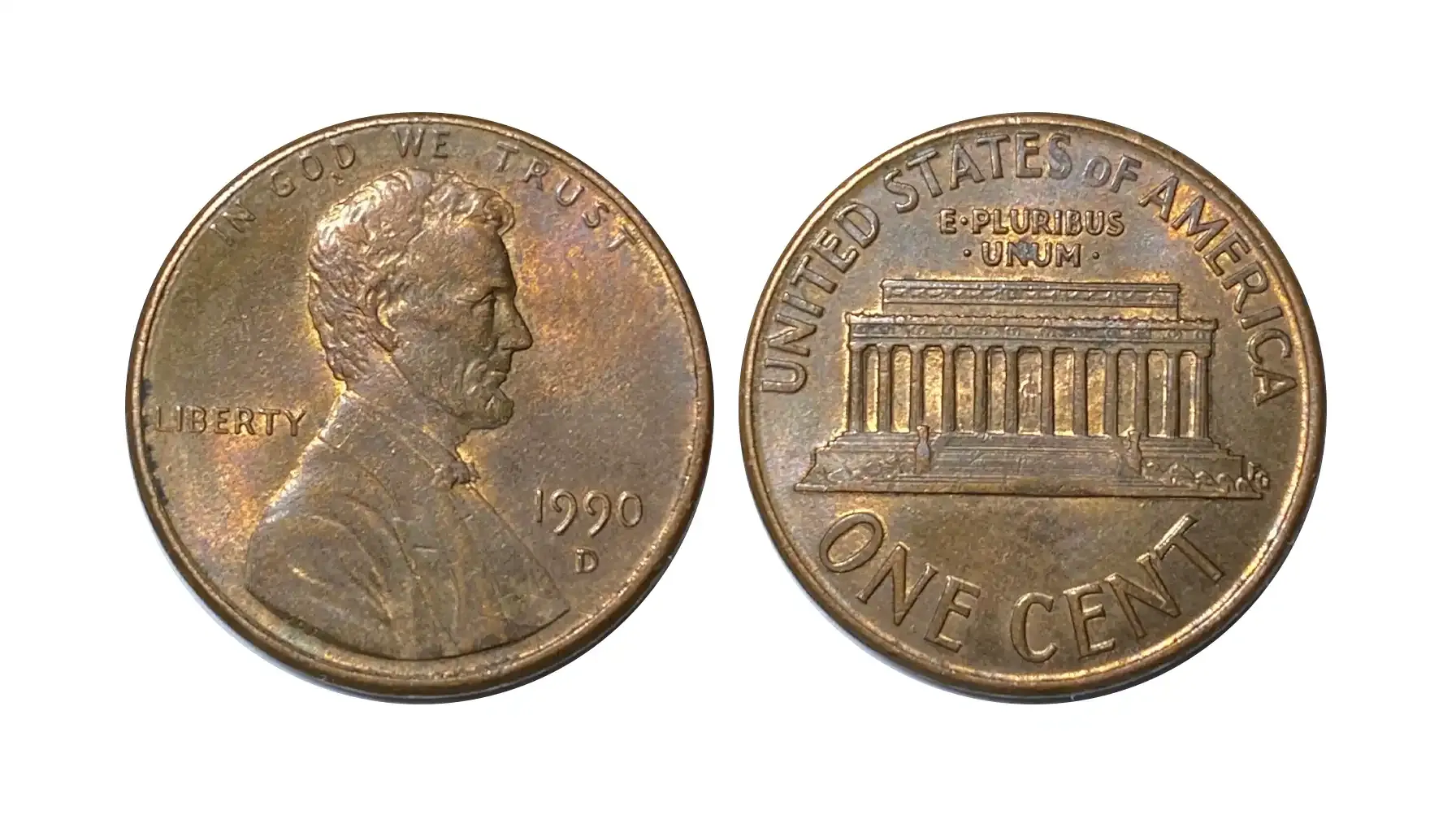Contents:
The 1968 penny is a classic example of American coinage that combines vintage charm with some collector appeal. These coins are often taken for granted as common, but they can mask some real surprises for collectors.
So now let's have a closer look at the coin to see if the 1968 one cent can be of interest to novice and experienced collectors; how to check these coins value; how much is a penny from 1968 worth today and what interesting exemplars (as 1968 error penny examples) can you look for to add to your collection?
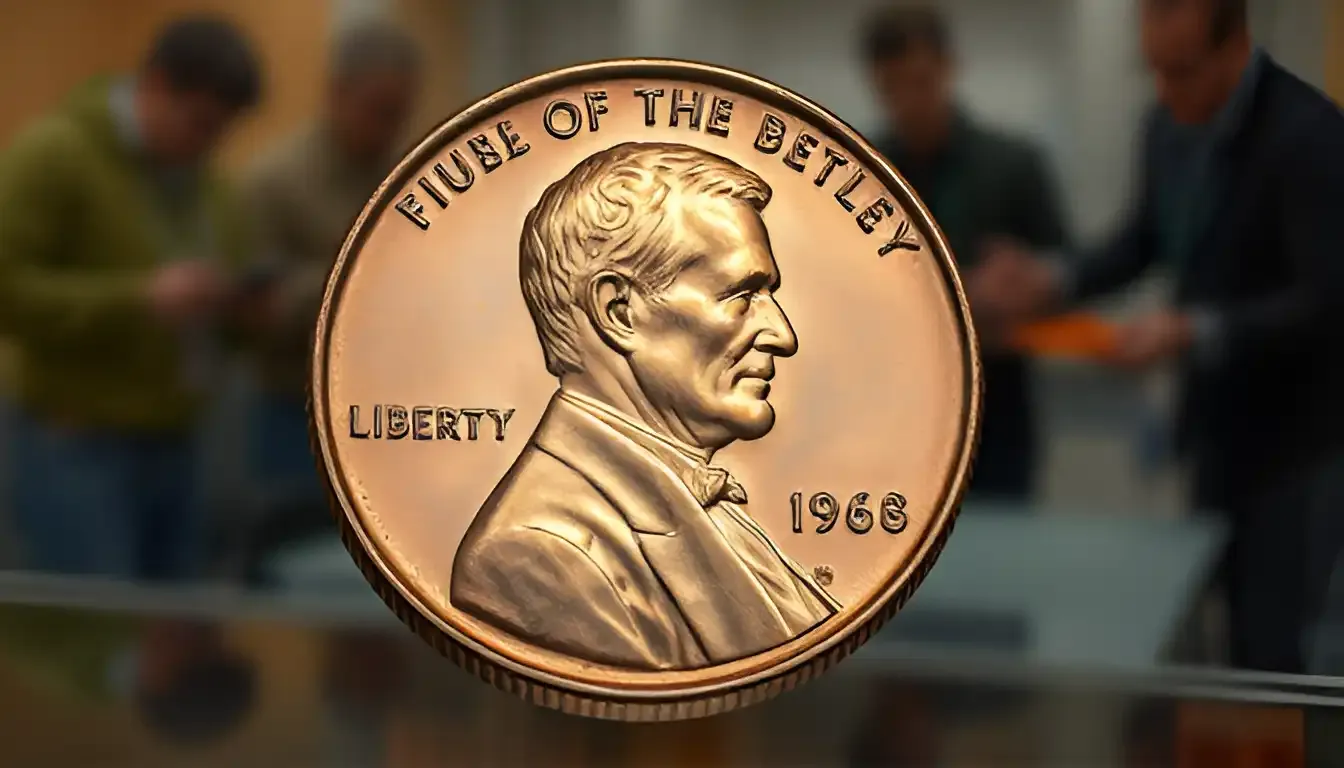
1968 Lincoln Penny: An All-Time Classic
Design
1968 1 cent continues the tradition of the Lincoln Cent line, which started in 1909 in honor of the 100th anniversary of Abraham Lincoln's birth and is still minted today. The obverse of the coin shows a ]Lincoln portrait. The inscription "In God We Trust " is engraved above the President's head, while the words "Liberty " and the year of minting, 1968, are located on the sides.
The obverse has remained unchanged since minting began, featuring the profile of Abraham Lincoln. Lincoln was the first president to be portrayed on a U.S. coin, and it is one of the longest-lived images in U.S. history.
The reverse of the 1968 coin features an image of the Lincoln Memorial, which began to appear on coins in 1959, replacing the earlier design with ears of wheat. The Lincoln Memorial symbolizes reverence for one of the most prominent figures in American history. If you look closely at the memorial, you can even make out a tiny image of a seated Lincoln between the memorial's columns. The top of the reverse shows "UNITED STATES OF AMERICA", below it the motto "E PLURIBUS UNUM", and at the bottom the denomination "ONE CENT".
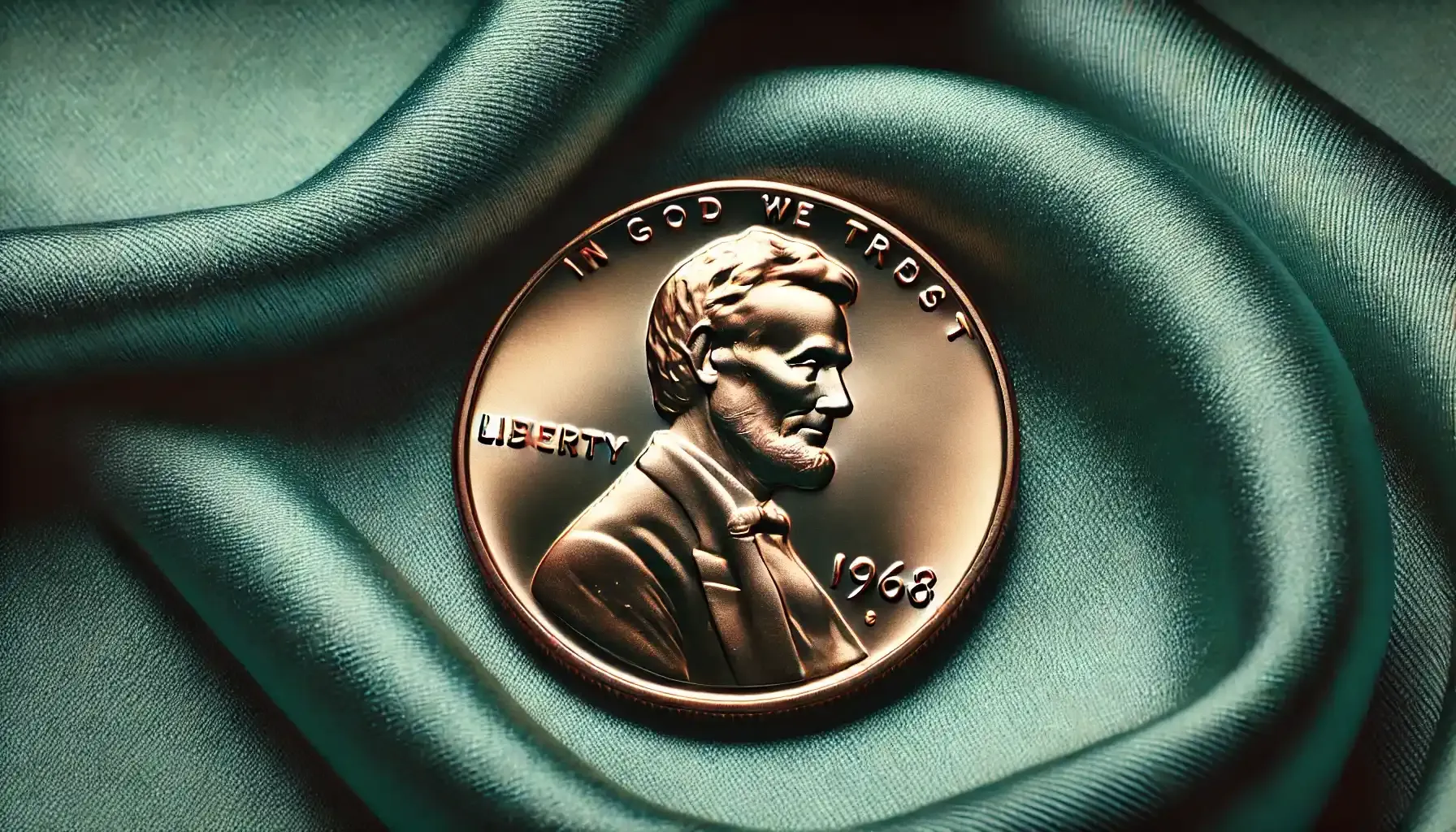
Interestingly, the reverse design went through several changes throughout the coinage period. The design changed sequentially: from Wheat Penny Reverse (with ears of wheat; 1909 - 1958), through Lincoln Memorial (in honor of the 150th anniversary of the President's birth; 1959 - 2009); stages of the President's life (in honor of Lincoln's 200th birthday and the 100th anniversary of penny minting; 2009) and finally came to Union Shield (since 2010).
Basic Parameters and Minting Figures
Characteristics | Description |
Composition | The basic material of the coin is bronze, consisting of 95% copper and 5% zinc and tin (before 1982). |
Weight | 3,11 g |
Diameter | 19,05 mm |
Thickness | 1,55 mm |
Edge | Plain |
Designer (obverse) | Victor David Brenner |
Designer (reverse) | Frank Gasparro (for Lincoln Memorial) |
Minting (Philadelphia) | 1,707,880,970 |
Minting (Denver) | 2,886,269,200 |
Minting (San Francisco) | 258,270,001 (including Proof-coins) |
As you can see, the coin was minted at three mints: Philadelphia (1968 no mint mark penny), Denver (1968 D penny), and San Francisco (1968 S penny). The most common are the 1968 D Lincoln cent and Philadelphia cent, but of particular interest to collectors are the 1968 S pieces minted in San Francisco, as their mintage was significantly lower. 1968 was a landmark year when the San Francisco Mint resumed minting circulating coins. Up to that point, from 1955 through 1967, San Francisco had only minted collector coins and proofs.
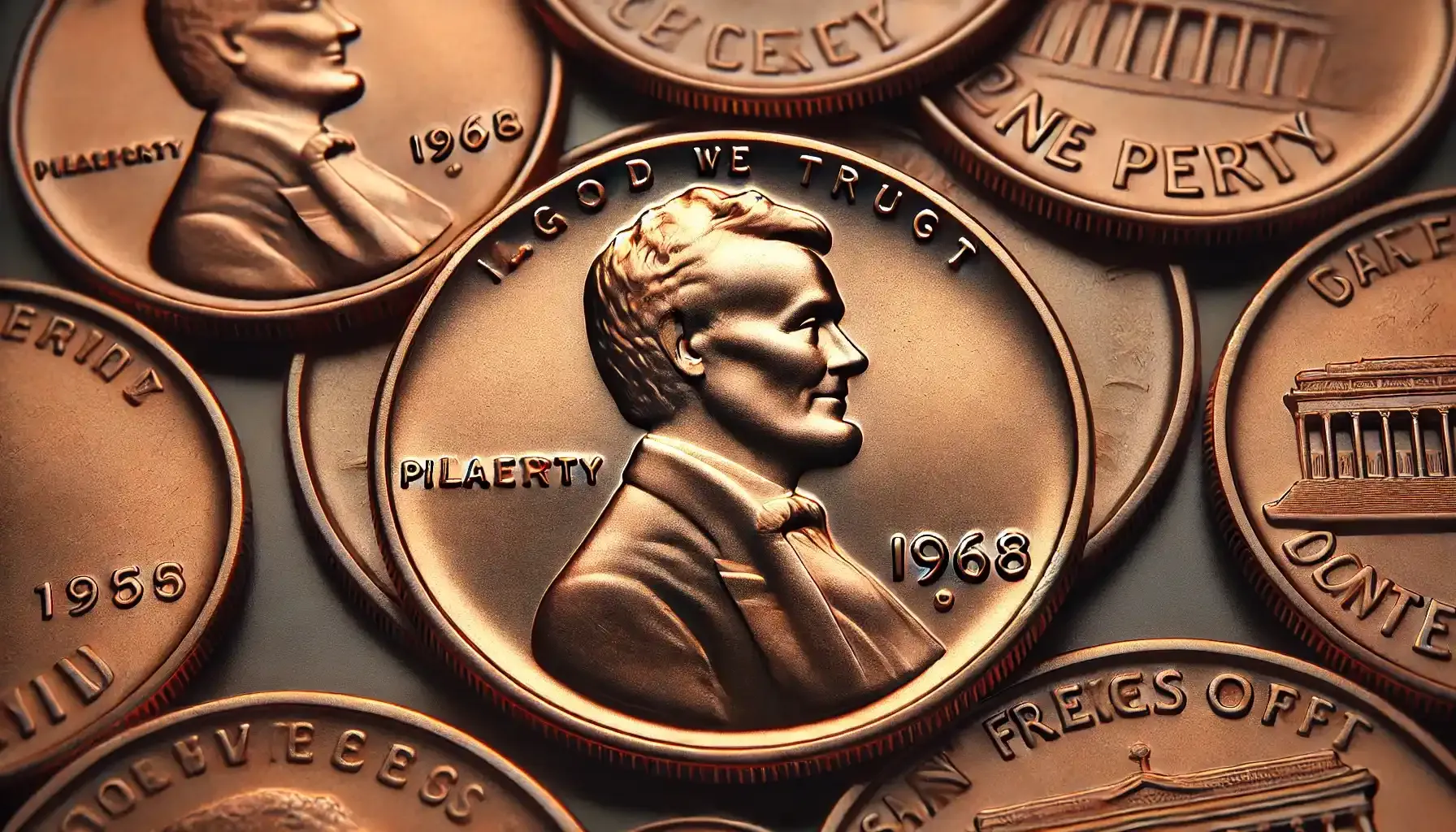
At first glance, the mintage of the coins is huge, and it really is. Regular 1968 no mint penny value is not significant, being worth only slightly more than face value depending on condition (from $0.10 to $10 for perfect specimens). However, there are exceptions like error coins that are of particular value.
Related article: 1974 Aluminum Cents.
Centavo De 1968 Valor: Error Examples to Add to Collection
Unfortunately, in the case of the 1968 penny, the minting errors did not go unnoticed. But fortunately, non-ideal specimens are more valuable, so they quickly became desirable collectibles for numismatists. It is no secret that this type of coin can cost tens and sometimes hundreds of times more than their face value, especially if they are of historical or technical importance. So here you can check the list of amazing imperfect coins and find out the one cent 1968 value, which varies depending on the type of errors listed below.
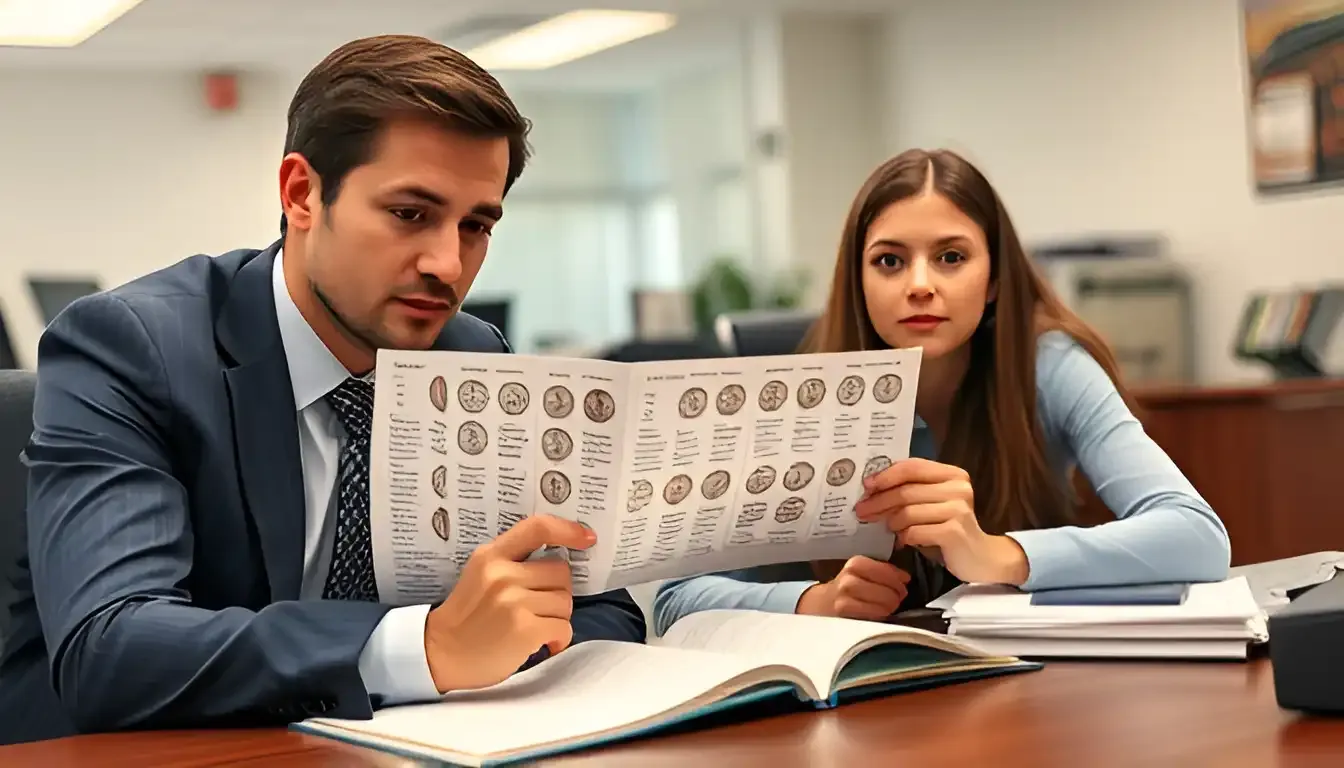
1968 S Double Die Penny
1968 S penny (double die obverse) was minted at the San Francisco Mint and is known for the double die strike resulting in the doubling of design elements on the coin obverse. This is especially noticeable on the inscriptions “IN GOD WE TRUST” and “LIBERTY” where the letters appear to be overlapped with a slight offset. The 1968 S DDO penny value is significantly higher than the ordinary S penny, and it is highly sought after by collectors. So, a 1968 S penny double die worth several hundred dollars (depending on the condition of the coin).
1968 D Penny “In God We Trust” Error
The list of 1968 D penny errors includes examples where the inscription "IN GOD WE TRUST" on the 1968 D mint penny appears indistinct, displaced, or deformed. This error occurs due to misalignment, wear, deformation, or dirt on the stamp. This defect, while relatively rare, adds to the 1968d cent's additional collector appeal and value.
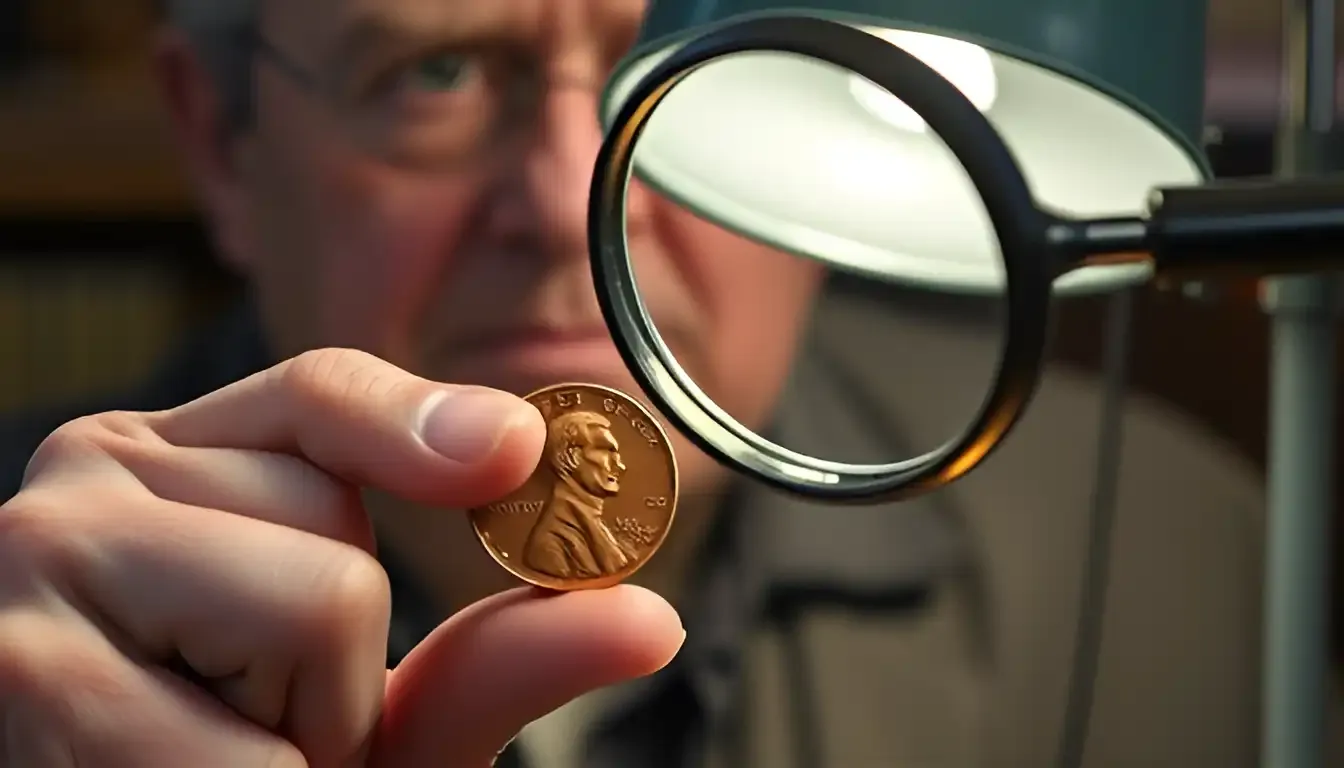
1968 D Lincoln Cent with Off-Center Strike Error
Another common error is a misalignment of the image relative to the center of the coin, when the blank and the stamp are not properly adjusted to each other. The level of misalignment on a one cent 1968 D can range from a slight to a significant degree. The more severe the offset, the more valuable such a penny can become to collectors. Offset errors are more common than the other type of error, but significantly increase both the collectability and value of the coin (in the same way as in the case with double die 1968 penny value).
1968 D Cent with a Planchet Error
The error when the 1968 D cent was minted on a silver dime blank is one of the rarest and most unusual ones. It occurred during the minting process when the silver dime blank accidentally fell into the cent press. As a result, the cent has a smaller diameter and weight (typical of a dime but featuring a penny). Because of the difference in metal, these coins differ not only in appearance but also in weight - they are lighter than the standard copper-nickel penny. This makes them highly desirable to collectors, greatly increasing this wrong planchet 1968 1 cent coin value.

The Price of Uniqueness: How Much You Will Spend on a 1968 Rare Cent
As we mentioned earlier, these coins, being the ‘cherry on the cake’ are of high interest among collectors and are often worth considerable sums. In the table below you will be able to see the approximate range of estimated value of 1968 error cents.
Coin | Estimated Value ($) |
1968 S Double Die Penny | $150 - $1,000+ |
1968 D Penny “In God We Trust” Error | $25 - $250+ |
1968 D Lincoln Cent with Off-Center Strike Error | $50 - $600+ |
1968 D Cent Struck on a Silver Dime Planchet | $500 - $5,000+ |
The value of such coins depends on many factors, including the visibility of the error, the condition of the coin, and the demand in the collector market. By the way, silver and gold coins are always more expensive because of their face value. Check it out in the Silver Eagle Program article.
Old Coins, but Modern Collectibles
Now that we have talked in detail about the 1 centavo 1968 valor, it can still be said that the 1968 1 cent is still an interesting object to collect. Despite the large-scale mintage, this year's error pennies remain valuable finds that have collectible and even investment value.
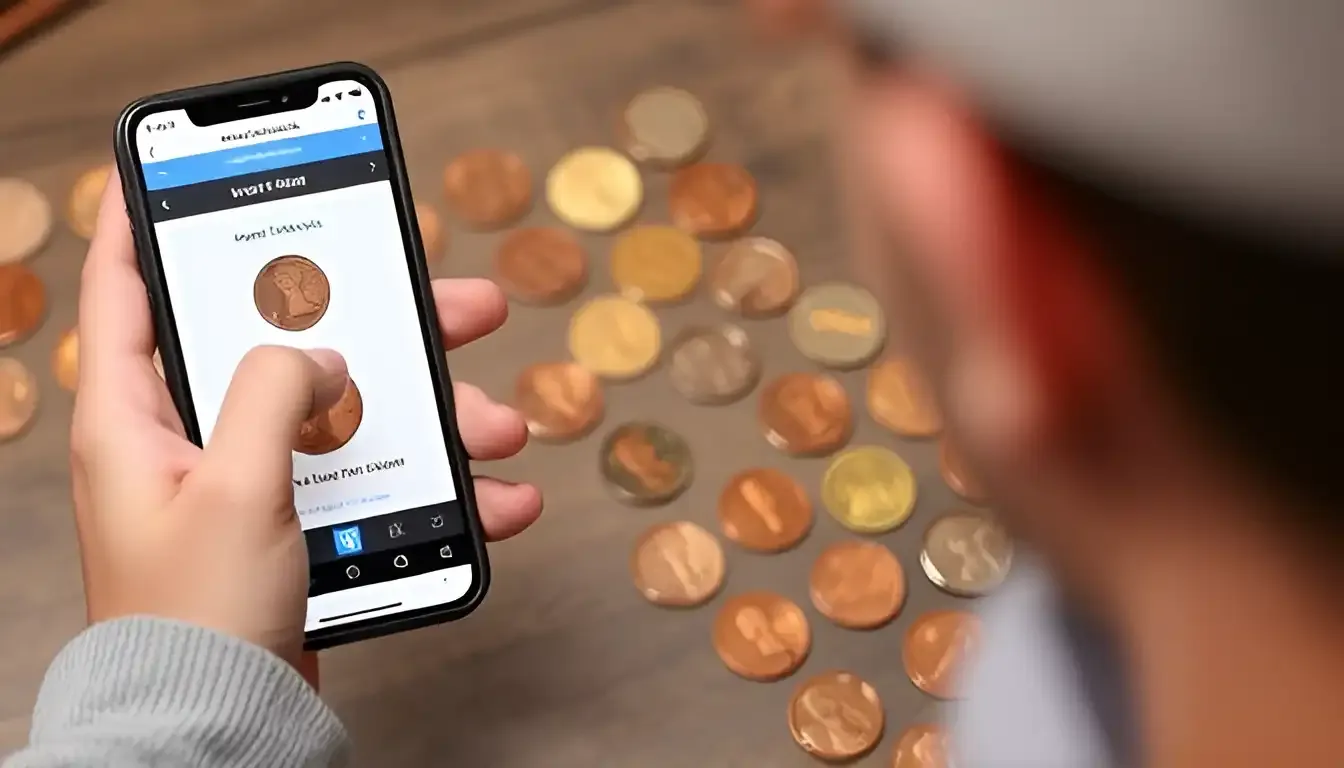
For people who are fond of numismatics, such specimens can become real riches, so even if you got an ordinary penny of 1968, do not hurry to spend it. Use a magnifying glass or modern technology like the Coin ID Scanner app to identify and evaluate the coin in a few moments. Don't miss the opportunity to add a specimen with an interesting history to your collection.


